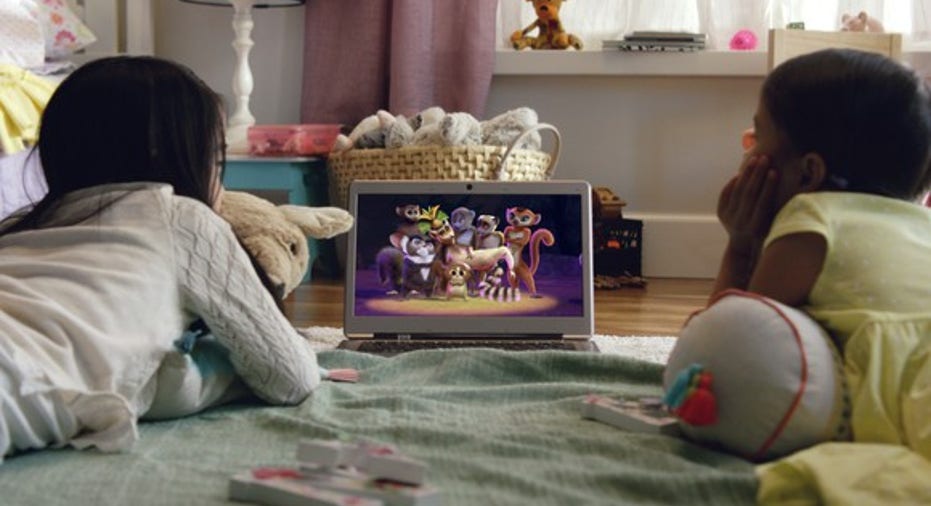The Hidden Cost of Netflix Original Content

Image Source: Netflix
Fans of Netflix's (NASDAQ: NFLX) original programming will be treated to 1,000 more hours of content from the streaming-video-on-demand service next year. The company plans to spend $1 billion more on content next year, as its content budget tops $6 billion.
But there's another big cost associated with Netflix's originals: marketing. While Netflix relies on its algorithm to surface new originals for its subscribers, it still relies on marketing outside its platform to increase awareness of its programming and attract new subscribers.
Adding subscribers in the U.S. keeps getting tougher
Netflix's strategy to grow its subscriber base revolves around original content. In its third-quarter letter to shareholders, Netflix management wrote, "U.S. marketing expense rose as a percentage of revenue as we spent to build awareness for our expanding number of original titles." Netflix's domestic marketing expense increased 45% year over year last quarter to $108 million.
The increase in marketing expenses wouldn't be very noteworthy except for the fact that Netflix's domestic subscriber growth has slowed to a crawl recently. In the third quarter, Netflix added just 370,000 net domestic members. Management points to higher-than-expected churn from the "un-grandfathering" of older subscribers from its $8-per-month plan to its new $10-per-month plan as a reason for slower growth. But Netflix doesn't provide data on its churn rate or gross adds.
If the goal of marketing spend is to attract new subscribers, Netflix's marketing dollars aren't working nearly as well as they used to. Last quarter, Netflix spent nearly $300 in marketing per domestic subscriber net add. In the second quarter -- when it added just 160,000 domestic subscribers -- Netflix spent a whopping $543 per net subscriber addition.
Before the second quarter this year, Netflix's domestic marketing expenses and their effectiveness in attracting new subscribers were relatively stable. For the full year of 2015, Netflix spent just $56 per domestic net add on marketing, and it spent just under $52 per domestic net add in 2014. So, spending $300 per net subscriber addition is quite a jump.
The new normal?
Netflix's commitment to expand its original content production 67% next year from 600 hours to 1,000 hours means investors can expect sustained marketing expense increases at Netflix. Netflix maintains its long-term goal of 60 million to 90 million domestic subscribers -- it's at 47.5 million now -- which means it still envisions several more years of subscriber growth before things start to slow down. Netflix will need to spend heavily to attract those last 25 million or so subscribers in the United States.
But originals can save Netflix some money on the content licensing side of the equation. Netflix is able to use most of its original productions across all of the geographic regions it operates, making it some of the most cost-effective content on the platform. Additionally, it's producing more shows in-house, which it believes will enable it to reduce expenses compared to the traditional production studios it's used in the past.
If Netflix's originals can save it some money on the content licensing side of the equation, the company can afford to spend more on marketing those originals. Even so, investors will want to see Netflix's marketing spend per net subscriber addition come down from where it is.
If marketing spend isn't going to come down, that means net subscriber additions will have to come up. Marketing original content is one of the best ways to do that as it draws new subscribers to Netflix for its differentiated content, and it reminds existing subscribers of all the shows they can watch on the service. That hits the net add metric from both sides of the equation: gross adds and subscriber churn.
A secret billion-dollar stock opportunity The world's biggest tech company forgot to show you something, but a few Wall Street analysts and the Fool didn't miss a beat: There's a small company that's powering their brand-new gadgets and the coming revolution in technology. And we think its stock price has nearly unlimited room to run for early in-the-know investors! To be one of them, just click here.
Adam Levy has no position in any stocks mentioned. The Motley Fool owns shares of and recommends Netflix. Try any of our Foolish newsletter services free for 30 days. We Fools may not all hold the same opinions, but we all believe that considering a diverse range of insights makes us better investors. The Motley Fool has a disclosure policy.



















